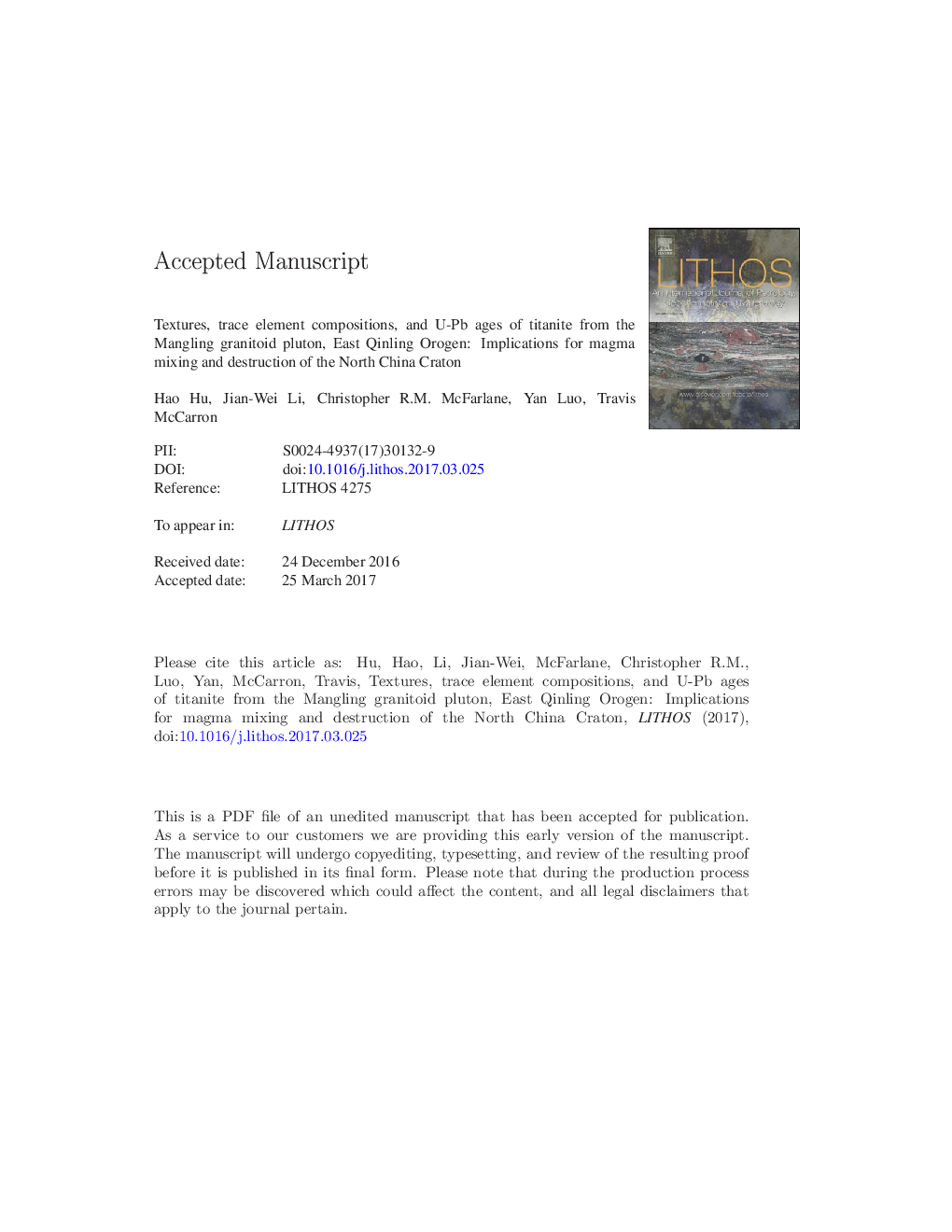| Article ID | Journal | Published Year | Pages | File Type |
|---|---|---|---|---|
| 5784028 | Lithos | 2017 | 76 Pages |
Abstract
Titanite grains from the MMEs (type 1) and mafic dike (type 5) have much lower Al2O3, REE, Nb/Zr, Y/Zr, and Lu/Hf, but higher (Ce + Nd)/Y and La/Ce ratios compared to those from the monzogranite (type 2 and type 4). These compositional differences suggest that titanite grains from the MMEs and the host monzogranite crystallized from different magmas. Type 3 titanite contains abundant Fe-Ti oxide inclusions and is characterized by dissolution and reprecipitation textures; the composition of its core and rims are comparable to those of type 1 and type 4 titanites, respectively. The compositional variation between the core and rims of the type 3 titanite grains implies that they were re-equilibrated with high temperature mafic magma and then continued to crystallize within the granitic magmas with low fO2. The textural, geochronological, and geochemical data of titanite grains can be best explained in term of mixing of mafic and felsic magmas. We conclude that both the fine-grained MMEs and the host monzogranite are hybrid products of mafic and felsic end-member magmas. When combined with other geological and geochronological data in the North China Craton, our results suggest that the widespread late Jurassic to early Cretaceous granitoid intrusions were generated in an extensional setting related to craton destruction.
Related Topics
Physical Sciences and Engineering
Earth and Planetary Sciences
Geochemistry and Petrology
Authors
Hao Hu, Jian-Wei Li, Christopher R.M. McFarlane, Yan Luo, Travis McCarron,
